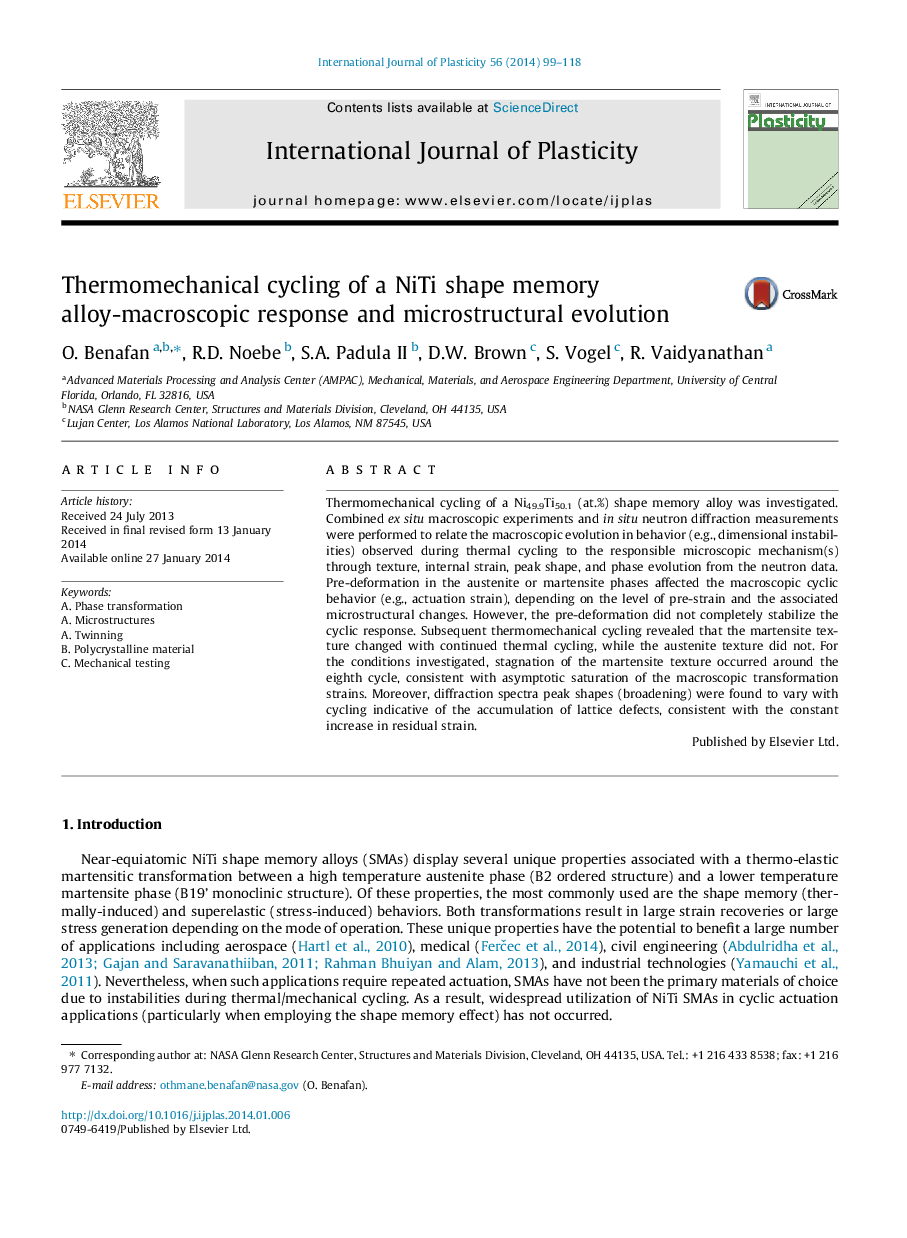| کد مقاله | کد نشریه | سال انتشار | مقاله انگلیسی | نسخه تمام متن |
|---|---|---|---|---|
| 784394 | 1465617 | 2014 | 20 صفحه PDF | دانلود رایگان |

• The effect of pre-straining on the thermomechanical cyclic response was highlighted.
• Texture of the martensite phase evolved marginally with initial thermomechanical cycling.
• Broadening of the peak shape profiles was observed in the austenite with increasing cycles.
• Increased cycling (>10 cycles) resulted in no observable texture evolution.
Thermomechanical cycling of a Ni49.9Ti50.1 (at.%) shape memory alloy was investigated. Combined ex situ macroscopic experiments and in situ neutron diffraction measurements were performed to relate the macroscopic evolution in behavior (e.g., dimensional instabilities) observed during thermal cycling to the responsible microscopic mechanism(s) through texture, internal strain, peak shape, and phase evolution from the neutron data. Pre-deformation in the austenite or martensite phases affected the macroscopic cyclic behavior (e.g., actuation strain), depending on the level of pre-strain and the associated microstructural changes. However, the pre-deformation did not completely stabilize the cyclic response. Subsequent thermomechanical cycling revealed that the martensite texture changed with continued thermal cycling, while the austenite texture did not. For the conditions investigated, stagnation of the martensite texture occurred around the eighth cycle, consistent with asymptotic saturation of the macroscopic transformation strains. Moreover, diffraction spectra peak shapes (broadening) were found to vary with cycling indicative of the accumulation of lattice defects, consistent with the constant increase in residual strain.
Journal: International Journal of Plasticity - Volume 56, May 2014, Pages 99–118